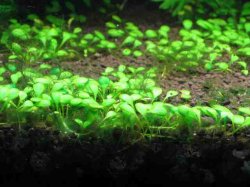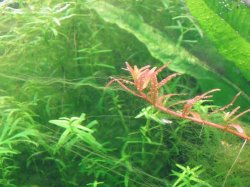Rhea
Fish Fanatic
OK, first a bit of history. My tank has been set up for nearly a year, and it was doing ok. Not great, but ok - dosing 10ml daily of Green Brighty Step 2. Whilst the plants were growing there was a bit of algae and nutrient issues, so after searching forums to see how other people were using the ADA ferts I started to dose Brighty K. Unfortunately shortly after I ran out of Green Brighty and didn't get more for a few weeks, and the result was a tank full of thread algae which I haven't recovered from. For the past few months I've tried lowering and raising the fert levels and all I've managed to do is let a lot of other algaes get a foothold.
What I really need is a way to control the algae and get onto a correct fert regime - please help!
Tank specs:
260 litres, waterchange 75l weekly using 1/3 RO
Levels:
NO3 - 5ppm max
NO2 - 0ppm
PO4 - 0ppm
NH3 - 0ppm
CO2 - 30ppm (according to drop checker)
Lighting:
2 x 38W T8s 9 hours per day
2 x 39W T5s 7 hours per day
I've attached two images below that should show some of the problems


What I really need is a way to control the algae and get onto a correct fert regime - please help!
Tank specs:
260 litres, waterchange 75l weekly using 1/3 RO
Levels:
NO3 - 5ppm max
NO2 - 0ppm
PO4 - 0ppm
NH3 - 0ppm
CO2 - 30ppm (according to drop checker)
Lighting:
2 x 38W T8s 9 hours per day
2 x 39W T5s 7 hours per day
I've attached two images below that should show some of the problems



 if I were you I would maybe cut a little back on the lighting for a while and maybe get a small algea eater, and you might have to do a little algea scrubbing ...
if I were you I would maybe cut a little back on the lighting for a while and maybe get a small algea eater, and you might have to do a little algea scrubbing ... /www.theplantedtank.co.uk/algae.htm
/www.theplantedtank.co.uk/algae.htm

